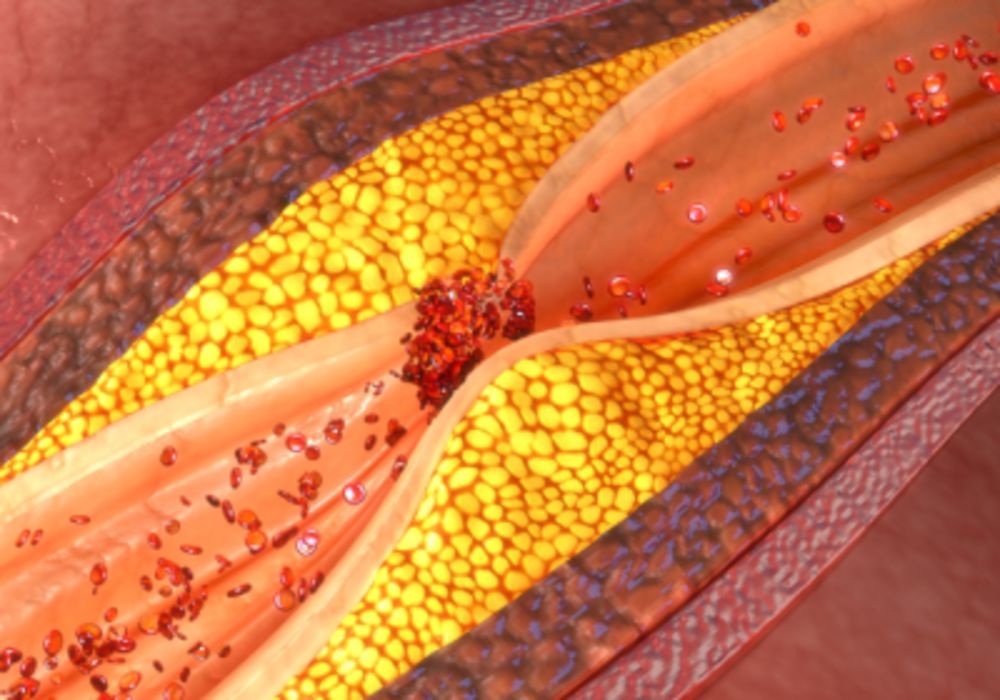Coronary computed tomography angiography (CTA) is recommended as a non-invasive imaging method for assessing coronary artery disease (CAD), particularly for patients with low to intermediate risk. It provides detailed information about coronary vessel lumen and wall characteristics, which is not available with invasive methods like catheter coronary angiography. CAD-RADS is a standardized reporting system for interpreting CTA results, facilitating communication among healthcare professionals. Studies show that CAD-RADS scores are reproducible and provide accurate prognostic information for patients with CAD. However, the prognostic value of CAD-RADS in comparison with coronary artery calcium score (CAC) has not been thoroughly evaluated. A recent systematic review and meta-analysis aimed to address this gap in knowledge by assessing the prognostic significance of CAD-RADS in patients with suspected CAD.
Search and Selection Process for Evaluating CAD-RADS Prognostic Value in CAD Patients
The authors conducted a systematic search on April 21, 2023, using PubMed, Web of Science Core Collection, Cochrane Advanced Search, and EMBASE databases. The search was carried out by two experienced reviewers using specific keywords related to CAD-RADS and coronary artery disease. Eligibility criteria included articles examining CAD-RADS prognostic value in CAD patients, excluding case reports, animal studies, and non-English articles. Screening of titles, abstracts, and full texts was done by the reviewers, with discrepancies resolved by a third reviewer. The study protocol was registered, and institutional review board approval was not required as it was a meta-analysis without involving clinical patient information.
CAD-RADS Prognostic Value and Methodological Approach in Suspected CAD Patients
The primary outcome of the meta-analysis was the pooled hazard ratio of CAD-RADS categories in patients with suspected CAD. Data regarding hazard ratios of different CAD-RADS categories compared to category 0 for predicting major adverse cardiovascular events (MACE) and all-cause mortality were extracted by two reviewers from 13 eligible articles. Additionally, the incremental increase in area under the curve (AUC) for predicting MACE with the addition of CAD-RADS to traditional clinical risk factors or coronary artery calcium score (CAC) was calculated where available. Data extraction was standardized, and risk of bias was assessed using the Newcastle-Ottawa Quality Assessment Scale for case-control studies. Funnel plots for hazard ratios in each CAD-RADS category were presented to assess publication bias. The final analysis included 13 articles covering 14 populations with 37,596 patients published between 2018 and 2021. Studies were conducted in various countries with diverse designs, including retrospective analyses of registry studies, retrospective single-center studies, and retrospective multicenter studies. The CT scanners used were 64 slice or higher, and endpoint definitions varied among studies.
Prognostic Significance of CAD-RADS Categories in Suspected CAD Patients
During the follow-up period, adverse events were detected in 2,536 patients, representing a prevalence of 6.7%. The pooled hazard ratio (HR) increased gradually with higher CAD-RADS categories. CAD-RADS 1 had an HR of 2.47, CAD-RADS 2 had an HR of 3.32, CAD-RADS 3 had an HR of 4.64, CAD-RADS 4a had an HR of 4.87, CAD-RADS 4b showed an increasing trend compared to 4a (HR 7.30), and CAD-RADS 5 had the highest HR of 9.06. Although the difference between CAD-RADS 4a and 4b was not statistically significant, a progressive increase in HRs was observed as categories increased. Regarding the prognostic potential of CAD-RADS for all-cause mortality and major adverse cardiovascular events (MACE), CAD-RADS was a significant predictor for both endpoints across all categories except for CAD-RADS 1 in all-cause mortality. The risk of bias assessment indicated that most studies were of high or moderate quality. Sensitivity analysis showed consistent results, and publication bias was detected in pooled HRs of CAD-RADS.
Prognostic Capability and Clinical Implications of CAD-RADS in Suspected CAD Patients
The discussion highlights several key findings regarding the prognostic capability of CAD-RADS in patients with suspected coronary artery disease (CAD). Firstly, CAD-RADS demonstrates useful prognostic information, with hazard ratios increasing as the score increases. Notably, there is a trend of increasing hazard ratios from CAD-RADS 4a to 4b, although this difference was not statistically significant. Secondly, when combined with traditional clinical risk factors and coronary artery calcium (CAC) score, CAD-RADS predicts adverse events with high accuracy (AUC=0.82).
CAD-RADS serves not only as an objective tool for evaluating the severity of coronary CT angiography (CTA) findings but also offers guidance for post-diagnosis treatment, potentially reducing unnecessary invasive procedures. However, the discussion acknowledges limitations, such as the retrospective nature of many studies and potential biases. Despite these limitations, the meta-analysis confirms the prognostic power of CAD-RADS across all categories.
The study contrasts with a previous meta-analysis, noting differences in hazard ratios for CAD-RADS 4a and 4b, possibly attributed to study inclusion/exclusion criteria. The discussion emphasizes the importance of further research to optimize medical care for patients classified as CAD-RADS 4b, indicating a need for tailored treatment strategies.
The growing interest in utilizing artificial intelligence (AI) in diagnostic imaging, suggests its potential to enhance prognostic estimation beyond CAD-RADS. Future research may integrate AI-based risk stratification with clinical risk factors and imaging findings for more effective therapeutic care.
CAD-RADS shows an incremental increase in hazard ratios for major adverse cardiovascular events (MACE) with higher categories, particularly beyond CAD-RADS 4b. Combining CAD-RADS with clinical risk factors and coronary artery calcification offers high predictive capacity for MACE.
Source: Radiology AdvancesSource
Image Credit: iStock














